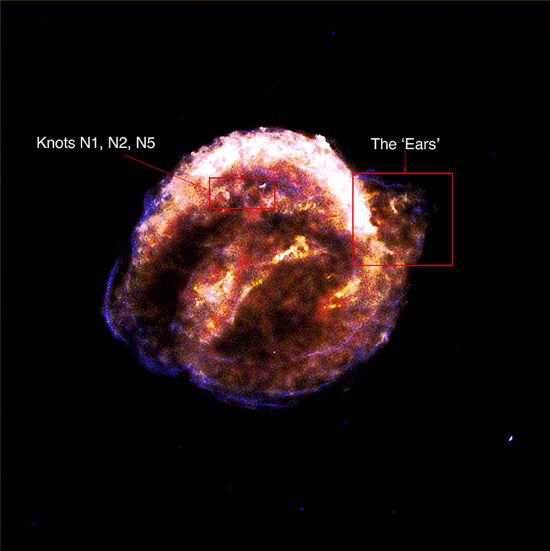
August 24, 2020
Stars explode for reasons not familiar to consensus science.
Electric Universe advocates agree with the consensus opinions that a supernova is an exploding star. However, since stars are composed of plasma and not neutral matter, supernovae should be thought of as emergent phenomena. “Emergent” means: “arising as an effect of complex causes and not analyzable simply as the sum of their effects.” As written elsewhere, properties like filamentation, long-range attraction and short-range repulsion, cell-like differentiation, and characteristic instabilities indicate a system and not merely an isolated explosion.
Electricity flowing through plasma creates regions of charge separation isolated by double layers. It is charge separation that is the foundation for a star’s life, as well as its death. Since stars are fueled by electric charge flowing through space, rather than explosions, supernovae result from an overload in stellar electromagnetic energy, similar to a capacitor when its dielectric medium is overcome. Electricity in the stellar circuit will concentrate at one point, initiating a double layer detonation.
When a star’s double layer explodes, it sends radiation blasting across the entire electromagnetic spectrum. This accelerates the double layer’s expansion. Acceleration can continue out to many stellar diameters, giving off a burst of high-energy “light” similar to that from a lightning bolt, with rapid onset and exponential decline.
Kepler’s supernova remnant is the debris from a detonated star that is located about 20,000 light years away from Earth in our Milky Way galaxy. In 1604 early astronomers, including Johannes Kepler who became the object’s namesake, saw the supernova explosion that destroyed the star.
According to a recent press release, material from Kepler’s Supernova Remnant is not slowing down as it expands into space. Velocity measurements of 15 small “knots” of debris indicate a speed of 23 million miles per hour. The supernova “blast wave” is expanding at about 15 million miles per hour. As the announcement states:
“This comparison implies that some knots in Kepler have hardly been slowed down by collisions with material surrounding the remnant in the approximately 400 years since the explosion.”
Supernovae can emit concentrated jets of material that burst from their axes. However, since jets are electromagnetic in nature, and the plasmas through which they move are electrically charged, shock waves and heat are by-products of a phenomenon that is primarily electrical. Plasma can be defined as any substance containing charged particles: lightning, planetary magnetospheres, the so-called “solar wind”, stars, and even galaxies are matter in the plasma state. Just as solid, liquid and gaseous states exist, plasma is another condition that exhibits unique properties.
Stephen Smith
The Thunderbolts Picture of the Day is generously supported by the Mainwaring Archive Foundation.












